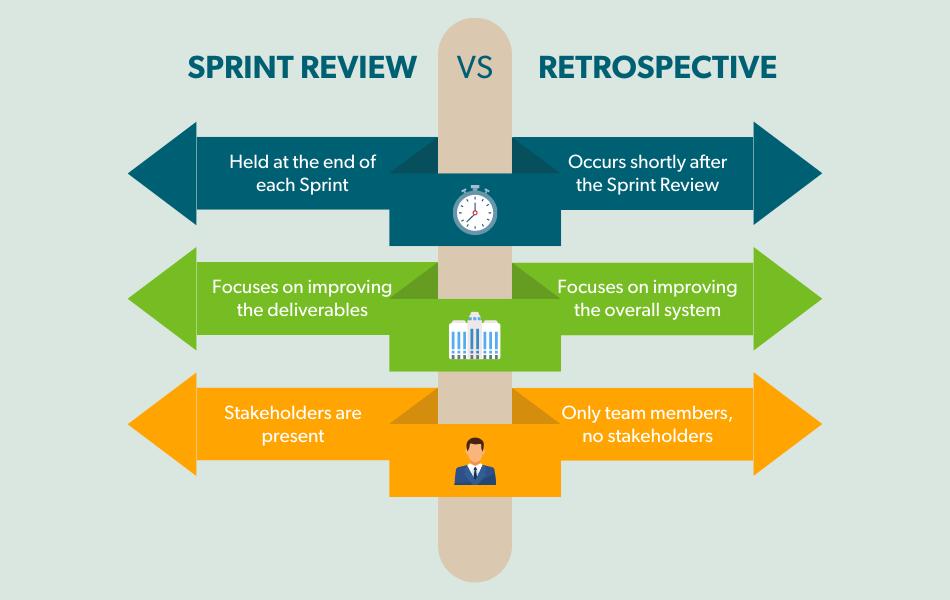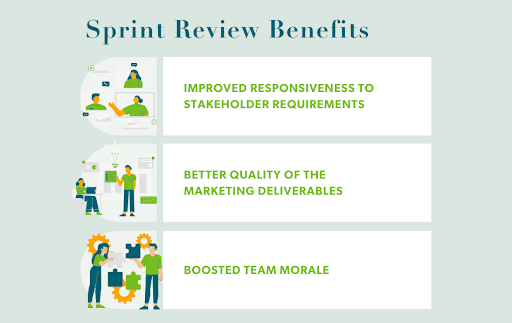-
- marketing agility
- Teams
- Organizations
- Education
- enterprise
- Articles
- Individuals
- Transformation
- Solution
- Leadership
- Getting Started
- business agility
- agile management
- going agile
- Frameworks
- agile mindset
- Agile Marketing Tools
- agile marketing journey
- organizational alignment
- Agile Marketers
- People
- Selection
- (Featured Posts)
- strategy
- agile journey
- Metrics and Data
- Kanban
- Resources
- Why Agile Marketing
- agile project management
- self-managing team
- Meetings
- Scrum
- agile adoption
- scaled agile marketing
- tactics
- scaled agile
- AI
- Agile Meetings
- agile marketing training
- agile takeaways
- Agile Leadership
- agile coach
- enterprise marketing agility
- Scrumban
- state of agile marketing
- team empowerment
- Intermediate
- agile marketing mindset
- agile marketing planning
- agile plan
- Individual
- Team
- Videos
- agile marketing
- kanban board
- Agile Marketing Terms
- agile transformation
- traditional marketing
- FAQ
- agile teams
- Agile Marketing Glossary
- CoE
- Scrumban
- agile
- agile marketer
- agile marketing case study
- agile marketing coaching
- agile marketing leaders
- agile marketing methodologies
- agile marketing metrics
- agile pilot
- agile sales
- agile team
- agile work breakdown
- cycle time
- employee satisfaction
- marketing value stream
- marketing-analytics
- remote teams
- sprints
- throughput
- work breakdown structure
- News
- agile brand
- agile marketing books
- agile marketing pilot
- agile marketing transformation
- agile review process
- agile team charter
- cost of delay
- hybrid framework
- pdca
- remote working
- scrum master
- stable agile teams
- stand ups
- startups
- team charter
- team morale
- user story
- value stream mapping
- visual workflow

The Sprint Review is one of the most underestimated and yet incredibly important Agile events for marketers out there. Experienced Agile practitioners treasure it, but teams that are new to Agile often have a hard time unlocking its value.
Because there are quite a few similarities between Sprint Reviews and Retrospectives, marketers tend to implement just one and forsake the other. To help you determine if your team needs both, we’ll cover the similarities and differences later in this article.
If implemented properly, the Sprint Review brings several important benefits to marketers that impact morale, stakeholder relationships, and more. After reaching the end of this text, you will fully understand them and are going to be able to run Sprint Reviews to their full value. Let’s dive in!
What is a Sprint Review
The Sprint Review is a meeting dedicated to inspecting the progress or outcomes generated during a Sprint and determining if there’s a need for changes in the marketing backlog. It is held at the end of each Sprint.
The participants of the meeting include the marketing team, stakeholders, and, in the role of facilitator, the Marketing Owner.
During the review, the team presents the results of their work to key stakeholders and elaborates on the progress toward reaching predefined marketing goals. In this forum, stakeholders have the opportunity to ask questions and provide feedback on the presented deliverables.
The Sprint Review is not just a presentation. It is a working session that aims to showcase completed work while establishing the next steps for supporting the marketing objectives in the next Sprint. If we have to put a time limit on a sprint review, dedicate between 30 mins and 2 hours for the meeting.
Now that we know what a Sprint Review is, let’s explore how it is different from the Retrospective meeting.
Difference Between a Sprint Review and Retrospective
Before diving into the differences between Sprint Reviews and Retrospectives, we can’t just skip the similarities that confuse marketers.

If this is your first time hearing about a Sprint Retrospective, it is the last step of the Scrum cycle that occurs shortly after the Sprint Review. The focus of the meeting is optimization of the processes, tools, and team dynamics that helped deliver the planned marketing work.
Both events are held at the end of each iteration and focus on facilitating continuous improvement. If done right, the marketing team has the opportunity to share the process challenges that they’ve faced during the Sprint and suggest improvements for future iterations. This is where the similarities end.
The key difference is that a Sprint Review focuses on improving the deliverables so the team can deliver better marketing assets, whereas a Sprint Retrospective focuses on improving the overall system so the team can work more harmoniously and achieve a sustainable flow of value together. In addition, stakeholders are present only during the Sprint Review.
Sprint Reviews and Retrospectives in practice
Curious to see what a Sprint Review and a Retrospective look like in practice? Here’s an example.
A content marketing team just finished their two-week Sprint and gathers for a Sprint Review. In the presence of the Marketing Owner and several key stakeholders, they present all deliverables that were committed for the Sprint.
Each team member showcases the value of the content assets they produced during the past two weeks and how they will contribute to the goal of boosting brand awareness and increasing website conversion rate. When something is not evident, the present stakeholders ask clarifying questions to understand the value of the team’s work better and provide feedback.
After the presentation part is over, the group engages in a discussion on how to improve the quality of the deliverables in the future and looks at the items in the marketing backlog to determine if they are still relevant for the next Sprint. If there’s anything more important that’s not included in the backlog, the Marketing Owner adds it and the meeting is concluded.
The next morning, the team gathers for a Retrospective. They’ve chosen the traditional format and dedicated 40 minutes to discuss the ending Sprint through three lenses:
- What went well
- What went poorly
- What needs to change for the next Sprint
The team keeps the discussion strictly about the marketing process and spends 10 minutes sharing their thoughts about the Sprint. After everyone is done, the team votes and proceeds to discuss for 30 minutes the topics that gathered the highest number of votes.
At the end of the meeting, the team agrees on action items for improving the next Sprint and concludes the Retrospective.
Now that we clearly understand the similarities and differences between these key Sprint events, let’s explore why Sprint Reviews are so important to marketers.
Before exploring the benefits of sprint reviews, why don't you take a second to get our Agile Marketing Transformation Checklist?
Benefits of Sprint Reviews for Marketers
According to the 5th Annual State of Agile Marketing Report, 41% of all Agile marketers do Retrospectives, but only 29% engage in Sprint Reviews. This means that 71% of respondents are missing out on several important benefits because they don't see the value in this meeting. In many cases, this occurs either because marketers are typically not comfortable sharing in progress work and/or their stakeholders may be tempted to skip out on Sprint Reviews because they don't understand their role. To highlight the value of this meeting, we focus on three key benefits of Sprint Reviews for marketers.

Improved responsiveness to stakeholder requirements
One of the greatest purposes of the Agile methodology is to provide an organization with the ability to quickly respond to change. Sprint Reviews contribute greatly to this because they allow a marketing team to showcase the results of their work every couple of weeks (if applying the most popular Sprint duration).
When the presented deliverables are not meeting stakeholder expectations, the team has the opportunity to hear firsthand and quickly take action to adapt and meet their requirements in the following Sprint.
In addition, if the marketing environment changes and some of the planned deliverables become irrelevant, the backlog can be updated in the presence of both the team and stakeholders, which creates synchrony and transparency.
Better quality of the marketing deliverables
The Sprint Review is an amazing quality assurance instrument for marketers. Since every deliverable is presented and reviewed simultaneously by the Marketing Owner and stakeholders, quality problems that were missed during the internal review process can be spotted.
In the following discussion at the end of the meeting, everyone present is allowed to contribute ideas on how to avoid such problems in the future and ensure that the quality of the team’s deliverables is up to the highest standard.
Boosted team morale
During a Sprint Review, each team member has the opportunity to connect with the people that evaluate the results of their work. This is a great way to receive credit for stellar performances and gain public recognition for all the hard work.
The Review is an important way for barriers between different groups in the organization to be removed in order to make way for full-on transparent working and create a sense of belonging and purpose.
Before You Move On
Although frequently ignored by marketers, the Sprint Review is an incredibly important Scrum event that we can use even when applying a hybrid Agile approach.
After every iteration, the team, Marketing Owner, and stakeholders gather to review and discuss the marketing deliverables prepared during the Sprint. However, this is not the only purpose of the meeting.
After the review part, the meeting proceeds to examine the marketing backlog and the relevance of the items there. If there are changes in the marketing environment or company objectives, new items that serve the organization better are added to the backlog and irrelevant items are removed.
Although there are similarities between the Sprint Review and Retrospective, these are fundamentally different Agile events. The first one is focused on the team deliverables, while the latter is strictly for the team and aims to improve the marketing process.
If you’re wondering whether Sprint Reviews are worth the time, you’re in danger of missing out on several important benefits including improved responsiveness to stakeholder requirements, better quality of all marketing deliverables, and the chance to nurture outstanding team morale.
Before you move on and leave this article behind, why don’t you check our award-winning certification Agile Marketing Fundamentals? It is a perfect course for marketers that are new to Agile and want to learn about Agile events like the Sprint Review.
Before moving on, don't forget to get your copy of our Agile Marketing Transformation Checklist.
Topics discussed
Improve your Marketing Ops every week
Subscribe to our blog to get insights sent directly to your inbox.



.jpg?width=450&height=250&name=A%20Complete%20Agile%20Marketing%20Definition%5B1920x1080%5D(1).jpg)